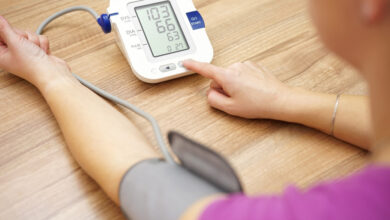Written by Whitney Willett, Medical Editor

If you’ve ever endured a high school economics class, you were undoubtedly taught a few standard rules to live by when it comes to your personal budget. Many of us were taught that your rent/mortgage should only be 30% of your income, and that you should keep at least six months worth of living expenses in your savings account. One thing you weren’t likely taught was how much of your budget should be allocated to your health care. Even if you were given some guidance there, the health care landscape has changed so much in recent years that those guidelines are probably out-of-date in today’s world. According to the Department of Health and Human Services, the cost of health care for every American in 2016 was $10,345 per person.
This cost is projected to increase by 5.8% by 2025. Taking these numbers into consideration, it’s easy to understand why folks are trying to pinch pennies wherever they can.
One way that some folks are trying to cut down on health care spending is trying over-the-counter options in lieu of turning to the professionals. Once upon a time, if you wanted a flu shot, you needed a doctor’s appointment. Now, most pharmacies offer the vaccine at little or no cost, and it is administered by a pharmacist. An increasingly popular way to skip the specialist and save on medical expenses is to use foot mapping kiosks to find orthotics for your shoes. If you aren’t familiar with orthotics, they are an insert that goes inside your shoe.
Orthotics are meant to provide better support than the generic inserts that come in your shoe. They help ensure pressure is more evenly distributed on your feet, that the arch of your foot is properly supported and can help alleviate foot pain and fatigue, knee pain, and lower back pain. The foot mapping machines claim that they can analyze your feet and recommend a “custom” orthotic that is right for you at no cost. A no cost analysis for a custom orthotic that can help reduce foot, knee and back pain sounds great, but is it too good to be true? If you think orthotics could benefit you, you’ve probably formulated a few questions: How do the foot mapping machines work? How does their analysis differ from the ones done by a specialist? If you end up with incorrect orthotics, can they be harmful? So, let’s compare.
What do foot mapping machines do?
The foot mapping kiosks you find at big-box stores and pharmacies are not unlike some of the equipment you find in a podiatrist’s office. They have sensors that measure which areas of your feet are taking more pressure. It also makes an evaluation of your arch. The machine asks you to stand on each foot and several other things to complete it’s evaluation. Within a few minutes, the machine suggests one of up to fourteen types of orthotics, ranging in price from $29.99 to $50 per pair. This is advertised as “custom” orthotics. The foot mapping is done at no cost on this self-service machine. The investment of time is about 3 minutes.
What foot mapping machines don’t do:
Because the machines can only really measure pressure, they don’t take into account things like gait (how you walk), biomechanics (how your foot moves), or if the needs of one foot are different than the other. If your needs do not match the available types of orthotics, the machine simply suggests whichever is closest. Therefore, accuracy cannot be measured and cannot be guaranteed.
What does a podiatrist do?
When you make an appointment with a podiatrist to be evaluated for orthotics, you will likely start with a foot mapping machine as well to assess stress, strain and pressure. Most doctors use more advanced equipment than the self-service kiosks. You will get a full exam of your feet: muscles, connective tissue and joints. The podiatrist will give a full biomechanical evaluation and gait analysis. Most podiatrist will then cast each foot, ensuring that the orthotics are truly customized specifically to each of your feet. An appointment start to finish can take up to an hour of your time. The cost for the evaluation varies widely depending on your insurance benefits. The cost of getting orthotics from a doctor may be fully or partially covered through your insurance. Out of pocket cost for this type of custom orthotics can be several hundred dollars.
There is an obvious distinction between what you get with a foot mapping evaluation for orthotics versus the comprehensive analysis and true customization you get from a professional. You may now be wondering how the orthotics compare. If you read the numerous reviews of over-the-counter orthotics, you’ll find many people sing there praises. But how do they stack up against their medical grade counterparts? In a side by side comparison, the most obvious difference is in firmness and flexibility. The over-the-counter orthotics are quite a bit less firm and substantially more flexible. Industry experts say you do not want flexible orthotics and they should be firm enough that they do not collapse or compress easily under a persons body weight. Basically, if you can manipulate their shape with your hands, they likely won’t be of much benefit. Because medical grade orthotics are made with considerations to many more factors affecting your feet, they are much firmer and may not be as comfortable initially. Keep in mind that longevity should be a consideration in determining the value of a product. Over-the-counter orthotics can wear out very quickly, while most medical grade orthotics last years. Lastly, it is important to note that buying over-the-counter orthotics is a gamble. And industry professions say improper orthotics can potentially cause an increase in wear and tear, as well as arthritis.
Although over-the-counter orthotics may save you money in the short run, they fall short of expectations in many areas. They are not truly custom, are not usually firm enough to provide substantial benefit, wear out much more quickly, and may potentially exacerbate problems. Though they may come through for you if using them is your only option, it seems in the long haul you get more “bang for your buck” by seeing a professional.






